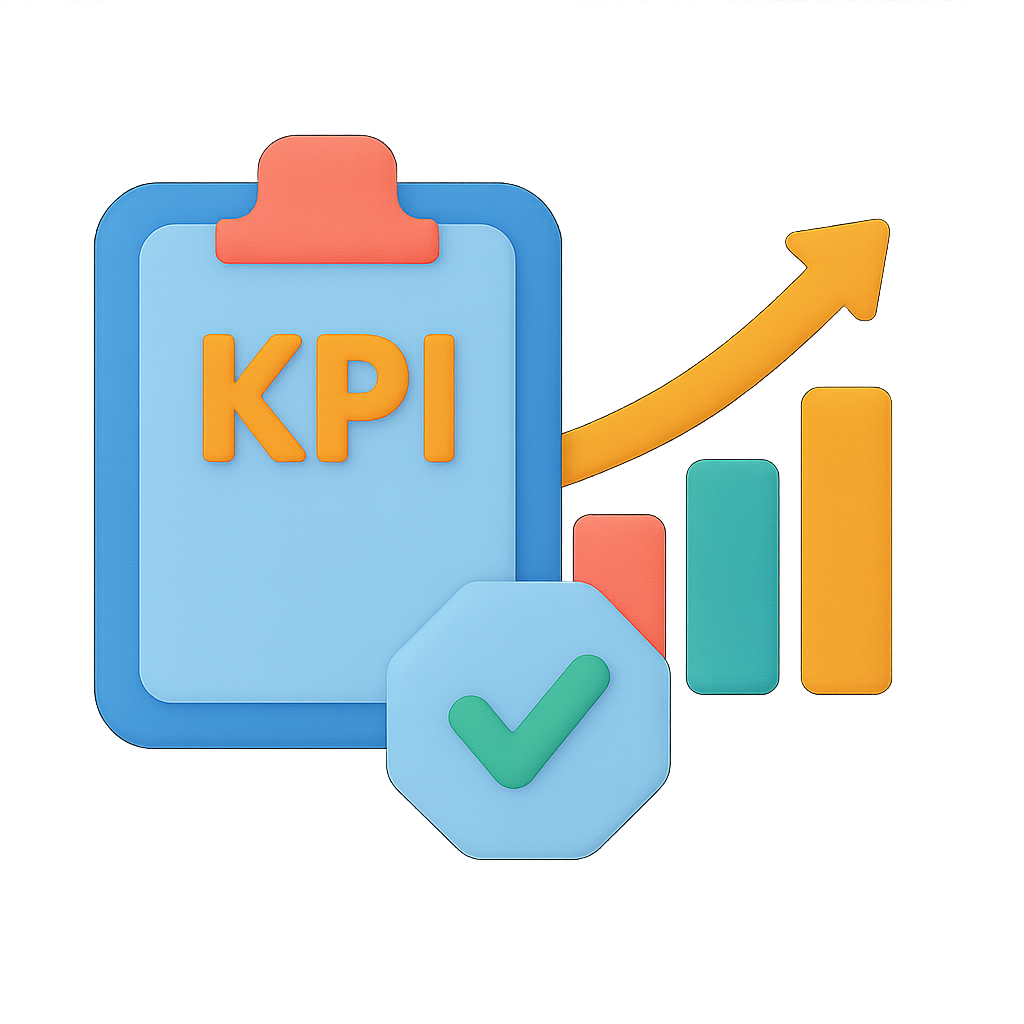Why Every Leader Needs a Growth Scorecard
Leadership development often feels abstract and unmeasurable. Without a structured approach to track progress, growth becomes haphazard—dependent on sporadic feedback or crisis-driven learning. A leadership growth scorecard changes this dynamic by creating visibility, accountability, and intentionality in your development journey.
The Power of a Leadership Scorecard
Visibility
Transforms abstract leadership qualities into observable, measurable dimensions that you can track over time.
Accountability
Creates a personal commitment to ongoing growth through regular assessment and reflection.
Intentionality
Focuses development efforts on specific areas rather than trying to improve everything at once.
A well-designed scorecard doesn’t just measure where you are—it guides where you’re going.
Key Dimensions of Leadership Growth
Effective leadership scorecards measure growth across multiple dimensions that collectively capture the full spectrum of leadership effectiveness:
Self-Leadership
How effectively you lead yourself—the foundation for all other leadership dimensions:
- Self-awareness: Understanding your strengths, blind spots, triggers, and impact on others
- Emotional intelligence: Managing your emotions and navigating others’ emotions effectively
- Learning agility: Adapting quickly to new situations and continuously developing new capabilities
- Resilience: Maintaining effectiveness under pressure and bouncing back from setbacks
- Focus & prioritization: Directing your energy toward what matters most
Team Leadership
How effectively you lead others and create conditions for collective success:
- Communication: Conveying information clearly and adapting your style to different audiences
- Coaching & development: Growing capabilities in others through feedback and support
- Team dynamics: Creating psychological safety and productive collaboration
- Delegation: Entrusting appropriate responsibilities to team members
- Recognition: Acknowledging contributions and celebrating successes
Strategic Leadership
How effectively you shape direction and drive results:
- Vision & direction: Creating compelling futures and aligning others around them
- Decision-making: Making sound judgments with appropriate speed and inclusivity
- Innovation: Encouraging creative thinking and calculated risk-taking
- Execution: Translating strategy into action and delivering results
- Problem-solving: Addressing complex challenges with effective approaches
Organizational Leadership
How effectively you navigate and influence the broader organization:
- Influence & impact: Affecting outcomes beyond your formal authority
- Change leadership: Guiding transitions and transformations effectively
- Organizational awareness: Understanding systems, politics, and culture
- Stakeholder management: Building and maintaining key relationships
- Enterprise perspective: Considering broader implications beyond immediate scope
Creating Your Scoring Rubric
A clear scoring system makes your leadership assessment consistent and meaningful:
Sample 5-Point Leadership Rubric
1: Developing Awareness
Beginning to recognize the importance of this dimension. Shows inconsistent application with significant room for development. Requires substantial guidance.
2: Building Capability
Demonstrates basic understanding and occasional effective application. Still developing consistency and requires regular support. Actively working on improvement.
3: Consistent Application
Regularly and effectively applies this dimension in standard situations. May struggle in complex or high-pressure contexts. Requires minimal guidance for typical scenarios.
4: Advanced Proficiency
Demonstrates strong capability across various contexts, including challenging situations. Serves as a resource to others. Consistently delivers positive outcomes.
5: Exemplary Mastery
Models excellence in this dimension. Creates innovative approaches and elevates others’ capabilities. Demonstrates mastery even in the most difficult circumstances.
Customization Tip:
For each leadership dimension, create specific behavioral examples of what each score looks like in your context. For example, what specifically demonstrates a “4” in communication for your role and organization?
Visualizing Your Leadership Profile
A radar chart (spider chart) provides a powerful visual representation of your leadership profile:
This visualization instantly highlights your strengths (areas where the web extends outward) and development opportunities (areas where the web contracts inward), creating a comprehensive view of your leadership profile.
Tools for Building Your Scorecard
Several digital tools can help you create and maintain your leadership scorecard:
Notion
Perfect for creating a comprehensive leadership dashboard with customizable properties, views, and templates.
Best for: Detailed tracking with rich text, embedded resources, and multiple visualization options
Airtable
Combines spreadsheet functionality with database features for powerful data tracking and visualization.
Best for: Complex scoring systems with multiple data points and automated calculations
Excel/Google Sheets
Familiar interfaces with robust charting capabilities for straightforward scorecard creation.
Best for: Accessibility and ease of use with basic radar charts and scoring formulas
UpMeridian’s leadership scorecard templates provide pre-built frameworks that you can customize to your specific leadership context and development goals.
Calibration: Beyond Self-Assessment
While self-assessment is valuable, multiple perspectives create a more accurate picture of your leadership:
Self-Assessment
Your own evaluation of your leadership capabilities and behaviors.
Strengths: Accessible, reflects intentions, captures internal experience
Limitations: Subject to blind spots, biases, and self-perception gaps
Peer Assessment
Feedback from colleagues who work with you regularly in different contexts.
Strengths: Provides horizontal perspective, captures day-to-day behaviors
Limitations: May reflect relationship dynamics rather than objective assessment
Manager Assessment
Evaluation from those who oversee your work and development.
Strengths: Provides organizational context, connects to career advancement
Limitations: Limited visibility into all contexts, potential power dynamics
Calibration Process
- Complete your self-assessment first to establish your baseline perspective
- Identify 3-5 trusted colleagues who observe your leadership in different contexts
- Share your leadership dimensions and scoring rubric with them
- Request specific, behavioral feedback rather than general impressions
- Look for patterns across feedback sources—both alignments and discrepancies
- Pay special attention to areas where others consistently rate you differently than you rate yourself
- Integrate the feedback into your final scorecard, noting self/other perception gaps
Reflection Prompts for Each Dimension
Thoughtful reflection transforms measurement into meaningful development:
Self-Leadership Reflection
- When do I feel most centered and effective as a leader?
- What triggers tend to derail my leadership effectiveness?
- How quickly do I recognize and regulate my emotional responses?
- What feedback have I received that I’ve been resistant to?
- How am I intentionally developing new capabilities?
Team Leadership Reflection
- How psychologically safe do team members feel with me?
- When do I effectively adapt my communication style?
- How am I developing capabilities in each team member?
- Where might I be over-controlling vs. under-supporting?
- How do I respond when team members disagree with me?
Strategic Leadership Reflection
- How clearly can I articulate our direction and the why behind it?
- Where do I tend to get stuck in decision-making?
- How do I balance short-term execution with long-term vision?
- When have I encouraged appropriate risk-taking?
- How do I respond when strategies need to change?
Organizational Leadership Reflection
- How effectively do I navigate organizational politics?
- Where do I have influence beyond my formal authority?
- How do I build allies for important initiatives?
- When have I successfully led change across boundaries?
- How do I balance team advocacy with enterprise perspective?
Quarterly Update Process
Leadership development happens over time. A quarterly review process helps you track progress and refine your focus:
Quarterly Update Checklist
- Review previous quarter’s development plan
What actions did you take? What progress did you observe? What obstacles emerged?
- Gather fresh feedback
What have others noticed about your leadership over the past quarter?
- Update your scorecard
Reassess each dimension based on current performance and feedback.
- Identify patterns and insights
What’s improving? What’s plateaued? What new challenges are emerging?
- Select 1-2 focus areas
Which dimensions would create the most leverage if improved?
- Create specific development actions
What concrete steps will you take to grow in these areas?
- Schedule mid-quarter check-in
Set a reminder to assess progress halfway through the quarter.
Connecting to Performance and Promotion
Your leadership scorecard isn’t just a development tool—it’s a strategic asset for career advancement:
Performance Conversations
Use your scorecard to enrich discussions with your manager:
- Share your self-assessment and development focus
- Highlight progress and growth over time
- Request specific feedback on key dimensions
- Align on leadership expectations and priorities
- Demonstrate your commitment to continuous improvement
Promotion Planning
Leverage your scorecard to prepare for advancement:
- Identify leadership dimensions critical for next-level roles
- Target development in those specific areas
- Document growth and impact over time
- Gather supporting evidence and examples
- Articulate your leadership journey and readiness
Pro Tip:
Research the leadership dimensions most valued at senior levels in your organization. Align your scorecard dimensions and development focus with these expectations to create a strategic path for advancement.
In Summary
A leadership growth scorecard transforms abstract development into a concrete, measurable journey. By identifying key dimensions, establishing clear metrics, and consistently tracking your progress, you create accountability for your growth and visibility into your evolution as a leader. Remember that the scorecard is a means to an end—not just measurement for its own sake, but a powerful tool to accelerate your leadership impact and effectiveness.
Your challenge this week:
Complete your first leadership scorecard this week.


